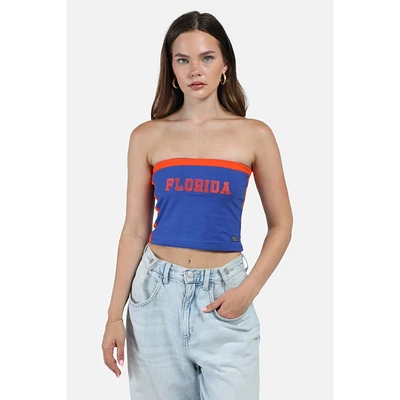Home
Functional Requirements for Bibliographic Records (FRBR): Hype or Cure-All
Loading Inventory...
Barnes and Noble
Functional Requirements for Bibliographic Records (FRBR): Hype or Cure-All
Current price: $180.00


Barnes and Noble
Functional Requirements for Bibliographic Records (FRBR): Hype or Cure-All
Current price: $180.00
Loading Inventory...
Size: Hardcover
*Product Information may vary - to confirm product availability, pricing, and additional information please contact Barnes and Noble
Get the straight facts on FRBR - and whether it is right for you!
In 1998, Functional Requirements for Bibliographic Records (FRBR) was a conceptual model promoted by the International Federation of Library Associations and Institutions (IFLA) as being the recommended new advancement in cataloging. As libraries strive to serve their users better in the coming years, questions remain as to whether FRBR may provide an answer on how to improve cataloging systems. Functional Requirements for Bibliographic Records (FRBR): Hype or Cure-All? explores not only the theoretical issues, such as the concept of "works" and the bibliographic relationships of musical works, but also provides a unique survey of most of the systems that actually implement FRBR such as the AustLit Gateway. This book describes the challenges that accompany implementation of FRBR, and how this abstract approach to cataloging can be a useful, practical tool to help improve library systems.
Functional Requirements for Bibliographic Records (FRBR): Hype or Cure-All? clearly explains the concepts, ideas, and practical applications of FRBR. The book is comprised of four major sections. A chronological section explains how FRBR was developed and how it will evolve in the future; a theoretical section reviews how FRBR analyzes different types of library materials; a practical aspects section examines how some systems actually use FRBR; and lastly, a section that explains an alternative to FRBR - the XOBIS project - which shows that other solutions are possible to meet future cataloging challenges.
Functional Requirements for Bibliographic Records (FRBR) explores:
innovative features, including the "Semantic Web" activities
future evolutions in cataloging
alternatives to FRBR
the history of IFLA Functional Requirements for Bibliographic Records Study
an updated description of the entity-relationship model being developed by the Working Group to extend the FRBR model to cover authority data
key aspects of the FRBR and FRANAR models that will need to be re-examined
the concept of expression
the cataloging of hand press materials
the AustLit Gateway
musical works in the FRBR model
the Paradigma Project at the National Library of Norway
the FRBR and the performing arts
oral traditions and FRBR
the design of future systems
the European FRBR research initiative
FRBRizing OCLC's WorldCat
the IFPA software and application interfaces
the Library of Congress's FRBR Display Tool
XOBIS - metadata - the critical bridge between content and sophisticated access
Librarians, library science faculty, students, and vendors will find Functional Requirements for Bibliographic Records (FRBR): Hype or Cure-All? an invaluable source of information on both the theoretical and practical aspects of FRBR.
In 1998, Functional Requirements for Bibliographic Records (FRBR) was a conceptual model promoted by the International Federation of Library Associations and Institutions (IFLA) as being the recommended new advancement in cataloging. As libraries strive to serve their users better in the coming years, questions remain as to whether FRBR may provide an answer on how to improve cataloging systems. Functional Requirements for Bibliographic Records (FRBR): Hype or Cure-All? explores not only the theoretical issues, such as the concept of "works" and the bibliographic relationships of musical works, but also provides a unique survey of most of the systems that actually implement FRBR such as the AustLit Gateway. This book describes the challenges that accompany implementation of FRBR, and how this abstract approach to cataloging can be a useful, practical tool to help improve library systems.
Functional Requirements for Bibliographic Records (FRBR): Hype or Cure-All? clearly explains the concepts, ideas, and practical applications of FRBR. The book is comprised of four major sections. A chronological section explains how FRBR was developed and how it will evolve in the future; a theoretical section reviews how FRBR analyzes different types of library materials; a practical aspects section examines how some systems actually use FRBR; and lastly, a section that explains an alternative to FRBR - the XOBIS project - which shows that other solutions are possible to meet future cataloging challenges.
Functional Requirements for Bibliographic Records (FRBR) explores:
innovative features, including the "Semantic Web" activities
future evolutions in cataloging
alternatives to FRBR
the history of IFLA Functional Requirements for Bibliographic Records Study
an updated description of the entity-relationship model being developed by the Working Group to extend the FRBR model to cover authority data
key aspects of the FRBR and FRANAR models that will need to be re-examined
the concept of expression
the cataloging of hand press materials
the AustLit Gateway
musical works in the FRBR model
the Paradigma Project at the National Library of Norway
the FRBR and the performing arts
oral traditions and FRBR
the design of future systems
the European FRBR research initiative
FRBRizing OCLC's WorldCat
the IFPA software and application interfaces
the Library of Congress's FRBR Display Tool
XOBIS - metadata - the critical bridge between content and sophisticated access
Librarians, library science faculty, students, and vendors will find Functional Requirements for Bibliographic Records (FRBR): Hype or Cure-All? an invaluable source of information on both the theoretical and practical aspects of FRBR.


















